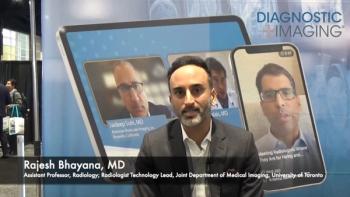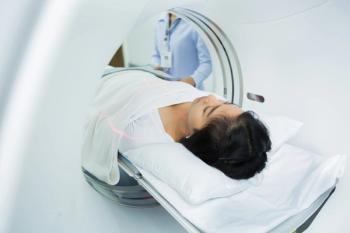Emerging mammography research suggests that a deep learning model may facilitate predictive risk scoring for interval breast cancer across women of different ages and breast density classifications.
For the retrospective study, recently published in Radiology, researchers assessed the use of the deep learning model Mirai in predictive risk scoring for interval breast cancer in 134,217 women (mean age of 59.1) who had triennial mammography exams. There were 524 interval cancers (ICs) in the cohort, according to the study.
The study authors found that the Mirai model offered similar predictive capacity for predicting interval cancer at one year (72 percent AUC), two years (67 percent AUC) and three years (67 percent).
For the different risk score thresholds of the highest one percent, five percent, 10 percent and 20 percent, the researchers determined that the deep learning model predicted 3.6 percent, 14.5 percent, 26.1 percent and 42.4 percent of interval breast cancers.
“Our results suggest that further workup of mammograms within the highest 20% of scores could yield 42.4% of ICs, meaning that Mirai could be used instead of or in addition to breast density to identify women who may benefit from supplemental imaging or a shortened screening interval,” wrote lead study author Joshua W.D. Rothwell, M.D., who is affiliated with the Department of Radiology at the University of Cambridge School of Clinical Medicine in Cambridge, U.K., and colleagues.
Three Key Takeaways
- Consistent predictive performance. The Mirai deep learning model demonstrated stable predictive accuracy for interval breast cancer across one-, two-, and three-year timeframes (AUCs of 72 percent, 67 percent, and 67 percent, respectively), suggesting reliable long-term performance.
- Risk stratification potential. Women within the highest 20 percent of Mirai risk scores accounted for 42.4 percent of interval breast cancers, indicating that the model could help identify patients who may benefit from supplemental imaging or shorter screening intervals.
- Broad applicability across subgroups. Mirai maintained similar predictive performance across different age groups and breast density categories (AUCs 65 to 68 percent), supporting its potential utility for individualized risk assessment beyond traditional density-based stratification.
The Mirai deep learning model also offered a similar C index range (67 to 71 percent) across different ages as well as comparable AUCs for younger and older women (68 percent and 67 percent respectively), according to the study authors. The researchers also noted a comparable C index range across women of different breast densities (67 to 70 percent) with no significant AUC difference between those with low and high breast density (65 percent vs. 66 percent).
“This may be due to Mirai’s implicit identification of density as a risk feature, despite the high degree of masking present within tissue of this density, which is known to significantly reduce the sensitivity of mammography. In comparison, previous studies have reported statistically higher AUCs when models explicitly combine density measurement with mammography-derived risk features,” added Rothwell and colleagues.
(Editor’s note: For related content, see “Reducing the Interval Breast Cancer Rate of Screening DBT: Can AI Have an Impact?,” “Mammography Study: Can Stand-Aline AI Enhance Detection of Interval Breast Cancer?” and “Mammography Study Shows Elevated Future Breast Cancer Risk with Initial Concordance of Radiologist and AI Interpretation.”)
In regard to study limitations, the authors conceded a lack of ethnicity data for more than 70 percent of the cohort and that the majority of the available ethnicity data was limited to women > 50 years of age. The researchers acknowledged that breast density assessments with Lunit Insight MMG may not be equivalent to BI-RADS assessments. The study authors also pointed out potential underpowering in subgroup analysis due to small cohorts and noted that Mirai only processes standard four-view mammograms.





























